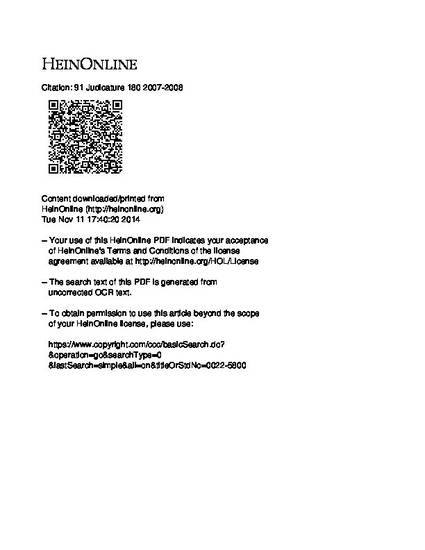
In Scott v. Harris (2007), the Supreme Court granted summary judgment on a Fourth Amendment excessive-force claim brought by a motorist injured when a pursuing law-enforcement officer terminated a high-speed pursuit by bumping the plaintiff's car. The Court relied almost exclusively on a video of the chase captured from the officer's dash-mounted camera and disregarded witness testimony that contradicted the video. In granting summary judgment in this circumstance, the Court fell sway to the myth of video evidence as able to speak for itself, as an objective, unambiguous, and singularly accurate depiction of real-world events, not subject to any interpretation or subjective analysis. The reality, however, is that video evidence is not so singularly objective or definitive in its meaning and message; instead, video presents one perspective on events and is subject to the interpretation and close analysis reserved for the jury at trial. Scott reflects the Supreme Court's effort and, arguably, failure to properly integrate video evidence into the pretrial process and summary judgment. This essay critiques the Court's approach in Scott, both the immediate decision and with an eye on the increasing use of video recording of encounters between police and the likelihood that video will be an increasingly common element of civil rights litigation.
Available at: http://works.bepress.com/howard_wasserman/71/
